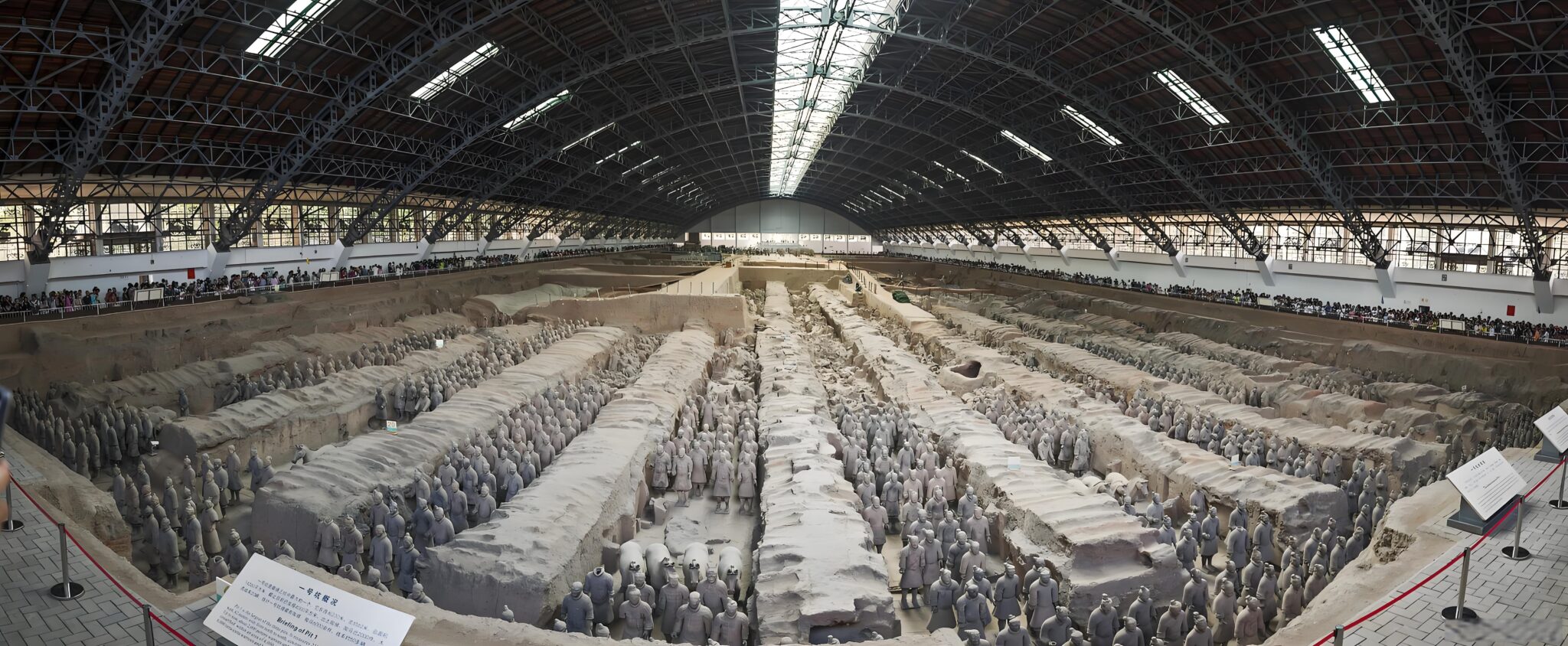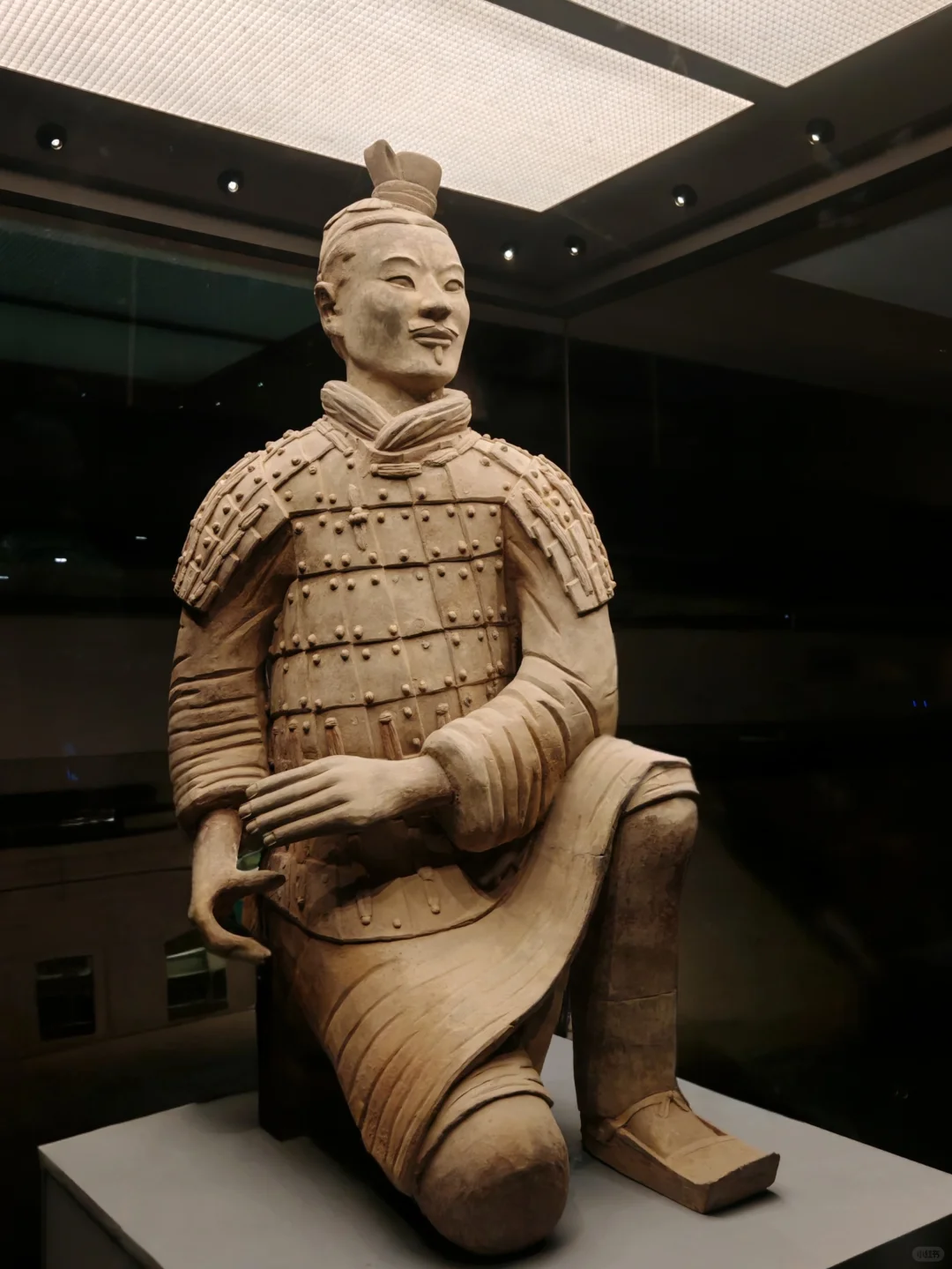
Terracotta Warriors Visitor Guide: A Tour Guide's Experience
8,000 life-sized clay soldiers stood in silence for 2,200 years until a farmer's shovel changed history forever.

8,000 life-sized clay soldiers stood in silence for 2,200 years until a farmer's shovel changed history forever.
It's located about 1.5 kilometers east of the Mausoleum of the First Qin Emperor, on Qinling North Road, Lintong District, Xi'an City (Click to see on Google Maps)
Created around 210 BCE during the Qin Dynasty, making them over 2,200 years old. They remained undiscovered until 1974.
Approximately 8,000 soldiers, 130 chariots, 520 horses, and 150 cavalry horses spread across three massive pits covering 22,780 square meters.
March to November: 8:30 AM - 6:00 PM
December to February: 8:30 AM - 5:30 PM
Closed on Mondays (except national holidays)
In 1974, local farmers digging a well near Xi'an stumbled upon one of the greatest archaeological discoveries of all time.

The Terracotta Warriors existed for the purpose of being viewed by no living person. The China's first emperor received these clay soldiers as his exclusive audience during his afterlife. These clay soldiers received burial near his massive tomb after his death in 210 BCE to safeguard him throughout eternity.
These warriors stand out because of their unique characteristics rather than their large quantity. Each soldier features distinct facial characteristics together with unique facial expressions and specific details. Archaeologists believe the warriors were created from real soldiers who served in the emperor's military forces. Some warriors wear mustaches but others display goatees or beardless faces. Soldiers wore different hairstyles depending on their military rank while their armor designs reflected their specific military positions.
According to Dr. Li Wei who has spent more than 15 years at the site as an archaeologist you experience living individuals from two millennia ago when you face these soldiers. The warriors possess such life-like features that they seem capable of beginning their military march at any instant.

The largest and most impressive pit contains the main army – row after row of infantry soldiers standing in formation, ready for battle. Walking along the viewing platforms, you'll see warriors in various stages of restoration, from fragments to fully assembled figures.
"The first time I saw Pit 1, I was speechless. The scale is overwhelming – it's like looking at a frozen moment in time from 2,200 years ago." — Michael, visitor from Australia

This pit showcases the diversity of the Qin army with archers, cavalry, and charioteers. Look for the kneeling archer – one of the most iconic figures from the entire site. Many consider Pit 2 to contain the finest examples of craftsmanship among all the warriors.
"The detail in Pit 2 is incredible. You can see the different expressions on their faces, the patterns on their armor, even the soles of their shoes." — Zhang Min, tour guide

The smallest pit appears to be a command center, with high-ranking officers and a war chariot. The intimate scale offers a different perspective from the vast armies in the other pits. Don't miss the detailed chariot horses with their intricate bridles and decorations.
"In Pit 3, you can almost imagine the generals planning their strategy, surrounded by their elite guard. It feels more personal than the other pits." — Local historian Wang Tao
How did ancient craftsmen create 8,000 unique warriors without modern tools or technology?
The warriors were created using an early assembly line technique that would impress even modern manufacturers. The bodies came from molds – archaeologists have identified eight basic body types – but each head was individually sculpted by hand.
"It's like they had a factory system," explains ceramics expert Liu Jianguo. "They made the basic parts in bulk, but then artists added personal touches to each figure. That's why no two warriors are exactly alike – they're mass-produced, yet individual."
When first unearthed, the warriors still had traces of bright paint – pinks, blues, reds, and purples. Within minutes of exposure to air, most of these colors oxidized and flaked away. Originally, the army was a riot of color, not the terracotta brown we see today.
Recent excavations use special techniques to preserve these colors. In one test pit, archaeologists found warriors with pink faces, bright red armor, and green, blue, and purple robes – a glimpse of how vibrant the entire army once looked.
The warriors originally held real weapons – bronze swords, spears, and crossbows. Many of these weapons, when discovered, were still sharp after 2,200 years. Analysis revealed they were coated with chromium, an anti-rust technology that wouldn't be "rediscovered" in the West until the 20th century.
Some archaeologists believe it would have taken 700,000 workers to complete the emperor's entire tomb complex, including the Terracotta Army. That's roughly the population of Boston working on a single project.
How a desperate search for water changed archaeology forever
Spring 1974 was brutally dry in Shaanxi province. A group of farmers from Xiyang village were desperately digging a well to irrigate their crops when Yang Zhifa's shovel hit something hard about 15 feet down.
At first, they thought they'd found an old kiln or maybe a burial site with pottery. As they continued digging, they uncovered a life-sized clay head. Then an arm. Then more fragments.
"We were just trying to find water. I struck something hard with my shovel and found a pottery head. We kept digging and found arms, legs, and bodies. We had no idea what we had stumbled upon. Some villagers were scared – they thought the figures might be evil spirits." — Yang Zhifa, one of the farmers who made the discovery
Word of the strange discovery reached local officials. Archaeologist Zhao Kangmin was the first expert to arrive at the site. He immediately recognized the significance of the find – these weren't ordinary clay figures but relics from the Qin Dynasty.
"I was amazed," Zhao later recalled. "I'd never seen anything like them before. I could tell from the craftsmanship that they were from the Qin Dynasty. I knew we had found something extraordinary."
By July 1974, a team of archaeologists had arrived and begun a small excavation. What they found astonished them – not just a few figures, but an entire underground army arranged in military formation.
The discovery came at a pivotal moment in Chinese history. The Cultural Revolution was winding down, and China was beginning to open to the outside world. In 1975, the first foreign visitors were allowed to view the excavation.
When photos of the warriors appeared in National Geographic in 1978, they caused a global sensation. Suddenly, everyone wanted to see these mysterious clay soldiers. Tourism to Xi'an exploded.
Today, the Terracotta Warriors are among China's most recognizable cultural symbols and a UNESCO World Heritage site that attracts over 5 million visitors annually. And it all started because a group of farmers needed water for their crops.
The farmers who made the discovery received modest rewards – about 30 yuan each (roughly $5 at the time). Yang Zhifa, who struck the first warrior with his shovel, later worked at the museum site, signing books for tourists. When asked if he regretted finding the warriors instead of water, he would smile and say, "We found something better than water – we found our history."
Everything you need to know to make the most of your trip to the Terracotta Warriors
The Terracotta Warriors Museum is located about 40 km (25 miles) east of Xi'an city center in Lintong District.
Take Tourist Bus Line 5 (专线5) from the east square of Xi'an Railway Station. Buses run every 10-15 minutes from 7:00 AM to 7:00 PM. The journey takes about 1 hour and costs 7 CNY each way.
Take Bus 307 from Xi'an Railway Station. The journey takes about 1.5 hours and costs 8 CNY each way. This option is more crowded but gives you a glimpse of local life.
A private car with driver costs around 400-600 CNY for a round trip, including waiting time. Your hotel can arrange this service, or you can book through a travel agency.
A taxi from Xi'an city center costs around 150-200 CNY one way. Ask your driver to wait or arrange a pickup time, as finding a return taxi can be difficult.
"Don't rush through Pit 2 - it has some of the best-preserved warriors, including the famous kneeling archer. The lighting is also better for photography here."
— Sarah from Australia
"The bronze chariots near the exit are easy to miss but absolutely stunning. They're 1/2 scale models with incredible detail - you can see tiny handles and decorations that survived 2,000+ years underground."
— Michael from Canada
"We hired a private guide who had worked at the site for 15 years. The stories and details she shared made the experience so much richer than just walking through on our own."
— The Johnson Family, USA
These nearby attractions pair perfectly with your visit to the Terracotta Warriors

Just 6 km from the warriors, these imperial hot springs have been soothing royal bodies since the Tang Dynasty. The site is also famous for the "Xi'an Incident" of 1936, a pivotal moment in modern Chinese history.

The actual burial mound of Emperor Qin remains unopened, but you can visit the site and learn about what might lie beneath. Ancient texts describe rivers of mercury and booby traps protecting untold treasures.

This scenic mountain offers hiking trails, ancient temples, and spectacular views. According to feng shui principles, Emperor Qin chose this location for his tomb because of the mountain's protective energy.
Surprising details that make the Terracotta Warriors even more impressive
Each of the 8,000+ warriors has unique facial features, hairstyles, and expressions. Archaeologists believe they were modeled after actual soldiers in Emperor Qin's army. Some faces show Mongolian features, others Central Asian, reflecting the diversity of ancient China.
When first created, the warriors were painted in bright colors – red, blue, green, purple, and more. When excavated, many still had visible paint, but it quickly oxidized and flaked off upon exposure to air. Today, scientists are working on preservation techniques to save the remaining pigments.
The bronze weapons found with the warriors were coated with chromium, which prevented rust for over 2,000 years. This technology wasn't "rediscovered" in the West until the 1930s. Many swords were still sharp when excavated, and crossbow triggers could still work.
The warriors were created using an early form of assembly line production. Bodies were made from molds (8 basic types have been identified), while heads were individually sculpted and attached later. This allowed for mass production while maintaining individuality.
What visitors see today represents only about 30% of the total Terracotta Army. Much remains deliberately unexcavated to preserve it until better conservation techniques are developed. Ground-penetrating radar has revealed many more warriors waiting to be uncovered.
According to historical records, Emperor Qin had all craftsmen who worked on his tomb complex buried alive to keep the tomb's secrets. Recent archaeological evidence suggests this may actually be true – mass graves have been found near the site containing the remains of young men.
Explore the incredible details of these ancient warriors





